Nepal, often synonymous with its awe-inspiring Himalayas, rolling hills, and untouched wilderness, has been a magnet for adventurers ever since it unveiled its natural beauty to the world. Recognized for top-tier trekking experiences, this mesmerizing nation presents an array of trekking adventures. From the bustling trails of Everest Base Camp to the tranquil pathways of Dolpo, from relaxed mid-hill walks to challenging mountain expeditions, and from brief day excursions to extensive glacier adventures, Nepal's offerings are bound to overwhelm any trekker.
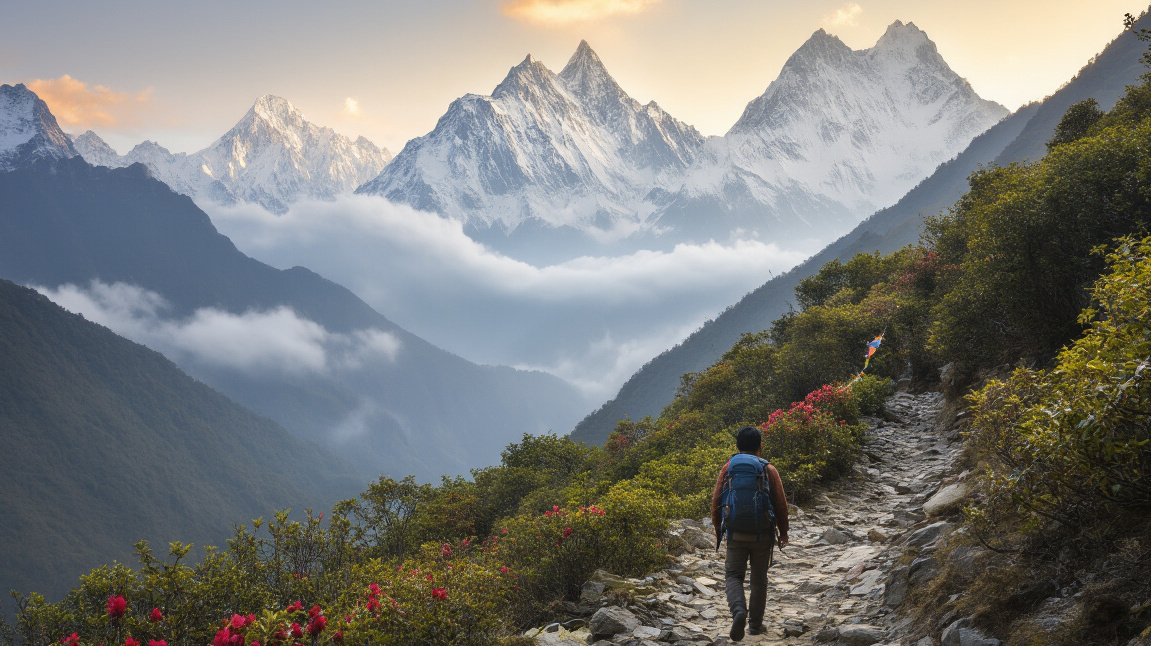
These vast trekking experiences can generally be categorized into two primary types based on accommodation and culinary arrangements: Teahouse Trekking and Camping Trekking. These frameworks form the backbone of most trek packages offered by agencies like Luxury Holiday Nepal. Moreover, the nature of the trek largely dictates its format. While teahouse treks are the go-to for many due to their operational ease, certain remote terrains devoid of teahouses necessitate camping adventures.
While Teahouse Trekking and Camping Trekking remain the most prevalent choices, some operators also provide hybrid services, where they might offer a guide, porters, and accommodations in a local lodge, tailoring to the unique needs of their clientele.
Here are some of the packages that can give you a great experience in different types of trekking in Nepal:-
Types of Trekking in Nepal
Teahouse Trekking
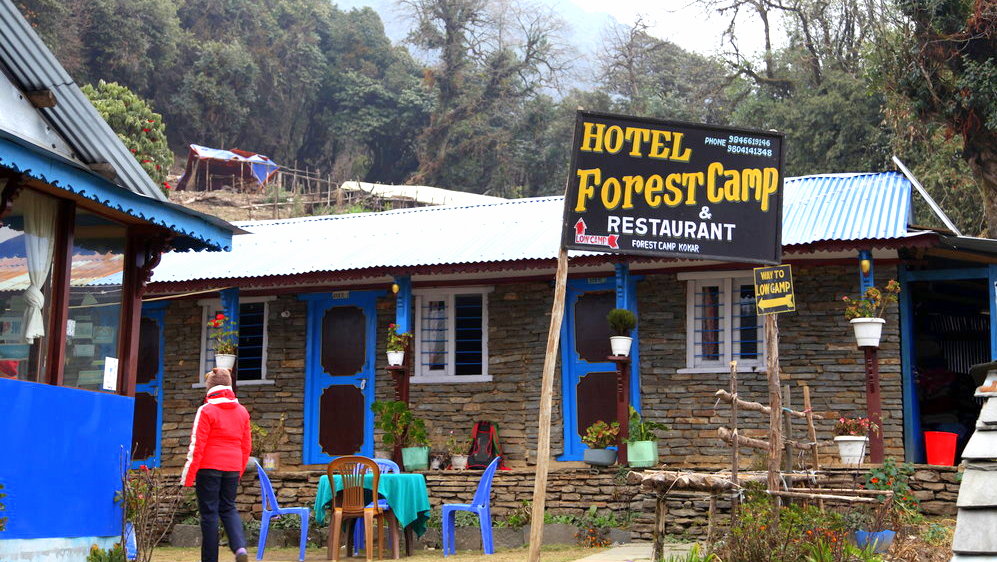
Maximize comfort with established mountain lodges
We've discovered that teahouse trekking offers an unparalleled level of comfort in the mountains. These established lodges provide warm beds with thick blankets, protection from harsh weather, and a cozy atmosphere after long days on the trail. Our tired muscles appreciate the solid walls and sturdy roofs when mountain storms roll in during the night.
The teahouses we encounter feature basic but essential amenities like shared bathrooms, hot showers (for a small fee), and common areas with fireplaces where we can warm up and dry our gear. We don't need to worry about setting up tents on rocky terrain or dealing with frozen zippers on sleeping bags. The lodge owners often provide extra blankets when temperatures drop, ensuring we get proper rest for the next day's adventure.
Enjoy authentic local cuisine along popular routes
Our taste buds get treated to incredible local flavors throughout the journey. We savor traditional dal bhat (rice and lentils) that provides the perfect energy boost for high-altitude trekking. The lodge kitchens serve fresh momos (dumplings), hearty soups, and local vegetables grown in mountain gardens.
We've noticed that each teahouse puts their own spin on classic dishes. Some offer exceptional thukpa (noodle soup) while others excel at preparing yak cheese dishes that we can't find anywhere else. The shared dining experience brings us closer to local culture as lodge owners often join our conversations, sharing stories about mountain life and local traditions.
Connect with fellow trekkers from around the world
Teahouse common rooms become melting pots of international friendships. We meet adventurers from every corner of the globe, sharing trail experiences over steaming cups of tea. These connections often lead to hiking partnerships, route recommendations, and lifelong friendships that extend far beyond the mountains.
We exchange stories about our home countries while playing card games or waiting out afternoon storms. The communal atmosphere helps solo travelers find companionship and gives larger groups opportunities to meet like-minded explorers. We've seen many trekkers change their planned routes after hearing exciting recommendations from fellow adventurers at teahouses.
Save money on camping equipment and food supplies
Our wallets thank us for choosing teahouse trekking over camping expeditions. We avoid expensive gear purchases like high-altitude tents, sleeping bags rated for extreme cold, and portable stoves. The cost savings on equipment alone often covers our entire teahouse accommodation expenses.
We also skip the hefty fees for hiring porters to carry camping equipment and food supplies. Teahouse meals cost less than bringing our own freeze-dried foods, and we don't need to worry about fuel canisters or cooking in harsh weather conditions. The overall expense becomes much more manageable, especially for first-time trekkers testing their mountain legs before investing in specialized gear.
Camping Trekking
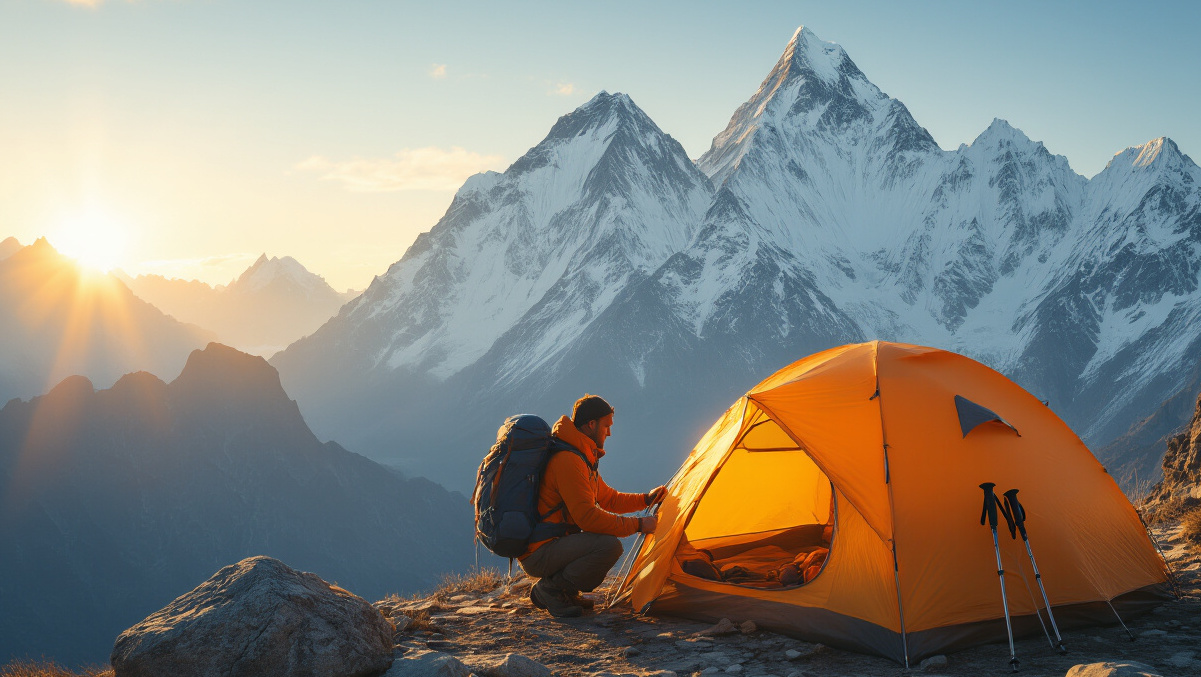
Experience complete wilderness immersion
When we pitch our tent under Nepal's star-studded skies, we disconnect from the digital world and reconnect with nature's raw beauty. Camping trekking offers us an unfiltered experience of the Himalayas, where we wake up to sunrise painting snow-capped peaks and fall asleep to the gentle whisper of mountain winds through our tent walls.
Our camping adventures take us beyond the comfort zones of teahouses, allowing us to establish base camps in pristine valleys where few footsteps have wandered. We become part of the landscape rather than mere observers, feeling the temperature drops as night approaches and experiencing weather changes firsthand. This intimate relationship with our environment creates memories that luxury accommodations simply can't provide.
During our camping expeditions, we witness wildlife in their natural habitats - from curious blue sheep observing our camp setup to the distant calls of Himalayan tahr echoing across valleys. We learn to read weather patterns by watching cloud formations over peaks and understand mountain rhythms through daily temperature fluctuations. Each camping spot becomes our temporary home, where we gather around portable stoves sharing stories and planning the next day's route while surrounded by nature's amphitheater.
Gain flexibility to explore remote locations
Camping gear grants us the freedom to venture into Nepal's most secluded regions where established trails end and adventure truly begins. We can extend our journeys into hidden valleys, pristine alpine lakes, and remote high passes that remain inaccessible to trekkers dependent on fixed accommodations. Our tents become our tickets to locations marked only on topographic maps and whispered about in trekking communities.
We design our own itineraries without worrying about teahouse availability or booking constraints. When we discover a breathtaking meadow or stumble upon an untouched glacier, we have the luxury of setting up camp and spending extra time exploring. Bad weather doesn't force us to seek shelter in crowded lodges - we simply adjust our plans and wait out storms in our weatherproof sanctuaries.
Our camping setup allows us to tackle challenging routes like the Snowman Trek or venture into restricted areas with proper permits. We can establish multiple camps during lengthy expeditions, creating supply caches and rest points that support extended wilderness journeys. This flexibility transforms us from followers of established routes into creators of our own mountain adventures.
Develop essential outdoor survival skills
Every camping trek becomes a masterclass in outdoor survival, teaching us skills that extend far beyond Nepal's mountains. We learn to purify water from mountain streams, navigate using compass and map when GPS fails, and read terrain for safe camping locations away from avalanche zones and flash flood paths.
Setting up camp in various weather conditions hones our technical abilities - from anchoring tents on rocky ground to creating wind barriers using natural features. We master altitude cooking techniques, learning how reduced air pressure affects boiling points and meal preparation times. Our gear management skills improve as we balance weight distribution, organize equipment for quick access, and maintain gear performance in harsh mountain conditions.
Weather prediction becomes second nature as we observe cloud patterns, wind directions, and barometric pressure changes. We develop emergency protocols for altitude sickness, equipment failure, and severe weather events. These skills transform us from dependent travelers into self-sufficient mountain adventurers capable of handling unexpected challenges. Each camping experience builds our confidence and competence, creating a foundation for future wilderness expeditions worldwide.
Here are some of the packages that can be best choice for Camping Trekking in Nepal:-
Independent Trekking
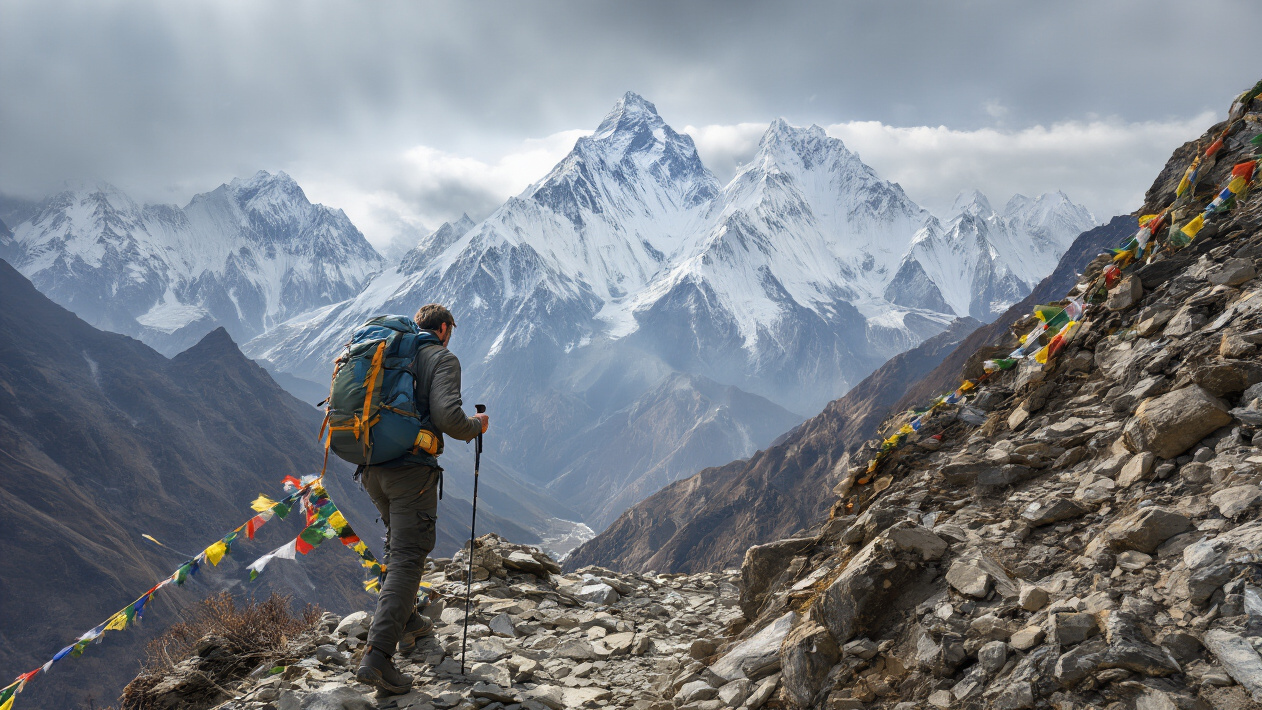
Create your own personalized adventure timeline
When we choose independent trekking, we gain complete control over our schedule. We can wake up with the sunrise or sleep in until mid-morning without worrying about group departure times. Our pace becomes entirely our own - we can take extra rest days to explore hidden monasteries, spend longer at viewpoints that capture our hearts, or push harder when we feel energized.
We get to decide which routes appeal to us most, whether that's taking scenic detours through remote villages or sticking to main trails. Our itinerary can change based on weather conditions, our physical condition, or simply because we discovered something interesting along the way. This flexibility means we can extend our stay in places that move us and skip areas that don't resonate with our travel style.
The beauty of independent trekking lies in our ability to create authentic connections with local communities. We can spend extra time learning traditional cooking methods from teahouse owners or join in local festivals that we stumble upon. Our timeline adapts to these spontaneous cultural exchanges that often become the highlight of our journey.
Challenge yourself with self-reliant exploration
Independent trekking pushes us to develop essential survival and navigation skills. We learn to read topographic maps, use compass bearings, and interpret weather patterns without relying on guides. These skills build our confidence not just in Nepal's mountains, but in outdoor adventures anywhere in the world.
We become responsible for our own safety decisions, from choosing appropriate gear to assessing trail conditions. This responsibility makes us more aware of our surroundings and helps us develop better judgment about risks and opportunities. We learn to trust our instincts about weather changes, altitude effects, and when to turn back.
Problem-solving becomes second nature as we navigate language barriers, find accommodations in remote areas, and handle unexpected challenges like trail closures or equipment failures. Each obstacle we overcome independently adds to our sense of accomplishment and personal growth.
Our self-reliance extends to physical preparation and packing decisions. We carefully select every item in our backpack, understanding that we'll carry everything ourselves. This teaches us to distinguish between necessities and luxuries, making us more efficient travelers.
Reduce costs through self-guided planning
Independent trekking offers significant financial advantages compared to guided expeditions. We eliminate guide fees, porter costs, and agency markups that can double or triple our total expenses. By booking accommodations directly with teahouse owners, we often secure better rates and build personal relationships.
We control our food budget by choosing where and what to eat. Local dal bhat meals cost fraction of what organized groups pay for pre-arranged menus. We can splurge on special meals in villages we love while economizing in areas where food options are limited.
Transportation costs drop when we use local buses and shared jeeps instead of private vehicles arranged by tour companies. We experience authentic local transport while saving substantial money that we can invest in extending our trek or upgrading accommodations.
|
Cost Category |
Independent Trekking |
Guided Trekking |
|
Guide fees |
$0 |
$25-40/day |
|
Porter services |
Optional |
Often included |
|
Accommodation |
Direct booking rates |
Agency markup |
|
Meals |
Local prices |
Fixed menu pricing |
|
Transportation |
Local transport |
Private arrangements |
Equipment rental becomes more economical when we deal directly with shops in Kathmandu or Pokhara rather than through agencies. We can negotiate better rates and choose exactly what we need.
Build confidence in mountain navigation
Navigating Nepal's trails independently develops our map reading and route-finding abilities. We learn to identify landmarks, follow trail markers, and use GPS devices effectively. These skills translate to increased confidence in mountainous terrain worldwide.
We become familiar with different types of trail signs and local navigation customs. Understanding how Nepali trails are marked and maintained helps us make better decisions about which paths to follow when trails split or become unclear.
Weather interpretation becomes crucial for independent trekkers. We learn to read cloud formations, understand how temperature changes affect trail conditions, and make informed decisions about when to continue or seek shelter. This meteorological awareness keeps us safer and helps us enjoy better conditions.
Our navigation skills improve through practice with both traditional tools and modern technology. We learn to cross-reference paper maps with GPS readings, use altimeter functions to confirm our elevation, and navigate using natural landmarks when visibility is poor.
Emergency procedures become second nature as we prepare for situations where we might need to find alternative routes or call for help. We research evacuation procedures, understand communication options in remote areas, and develop contingency plans for various scenarios.
Independent Trekking Rules in Nepal: Where You Can and Cannot Trek Solo
Nepal is a paradise for trekkers, offering everything from well-marked trails to remote wilderness routes. However, not all areas are open for independent trekking. For safety reasons, border sensitivities, and local regulations, some trekking regions require a licensed guide and special permits issued through authorized agencies.
Regions Where Independent Trekking is Not Allowed
The following are restricted trekking areas in Nepal where solo trekking is prohibited. Trekkers must be in a group of at least two and be accompanied by a government-licensed guide through a registered trekking agency.
- Upper Mustang – A remote and culturally rich region once part of the ancient Lo Kingdom. Its location near the Tibetan border and preserved Tibetan Buddhist culture make it a protected area.
- Upper Dolpo – Known for its untouched landscapes and ancient monasteries, this isolated region requires guided trekking due to its challenging terrain and proximity to Tibet.
- Manaslu Region – A stunning circuit around the world’s eighth-highest mountain. Since it borders Tibet, a special restricted area permit and licensed guide are mandatory.
- Tsum Valley – A sacred Himalayan valley known for its monasteries and deep-rooted Buddhist culture. Entry is only permitted with a guide and restricted area permit.
- Kanchenjunga Region – Home to the world’s third-highest peak, this area lies close to the Indian and Tibetan borders and requires both a guide and special permits.
- Nar Phu Valley – A hidden gem north of the Annapurna region, famous for its ancient villages and rugged trails. A guide is compulsory due to restricted entry rules.
- Humla (Limi Valley) – One of Nepal’s most remote areas, lying close to Tibet. Solo travel is not allowed here because of limited access and border sensitivity.
These regions are protected for cultural preservation, environmental balance, and trekker safety, ensuring responsible tourism and respect for local communities.
Regions Where Solo Trekking is Allowed
If you prefer exploring Nepal’s trails on your own, many popular and accessible regions allow independent trekking without a mandatory guide. These trails are well-marked, equipped with teahouses, and frequently visited by other trekkers.
- Everest Region (Khumbu Valley) – Includes Everest Base Camp, Gokyo Valley, and Tengboche. The trails are well-maintained and supported by plenty of lodges and facilities.
- Annapurna Region – From the classic Annapurna Circuit to the Annapurna Base Camp and Mardi Himal trails, this region is one of the most solo-friendly trekking destinations in Nepal.
- Langtang Valley – Located close to Kathmandu, Langtang offers beautiful landscapes and Tamang culture. The route is straightforward and ideal for solo trekkers.
- Ghorepani Poon Hill – A short and scenic trek in the Annapurna area, perfect for beginners or solo travelers seeking incredible sunrise views over the Himalayas.
- Helambu & Tamang Heritage Trails – These culturally rich trails near Kathmandu offer authentic village experiences, suitable for independent trekking with easy access to accommodations.
Solo trekking in these regions allows for flexibility, freedom, and personal pace, but it’s always wise to stay informed, carry proper gear, and register your trek for safety.
Premium Luxury Trekking Experiences
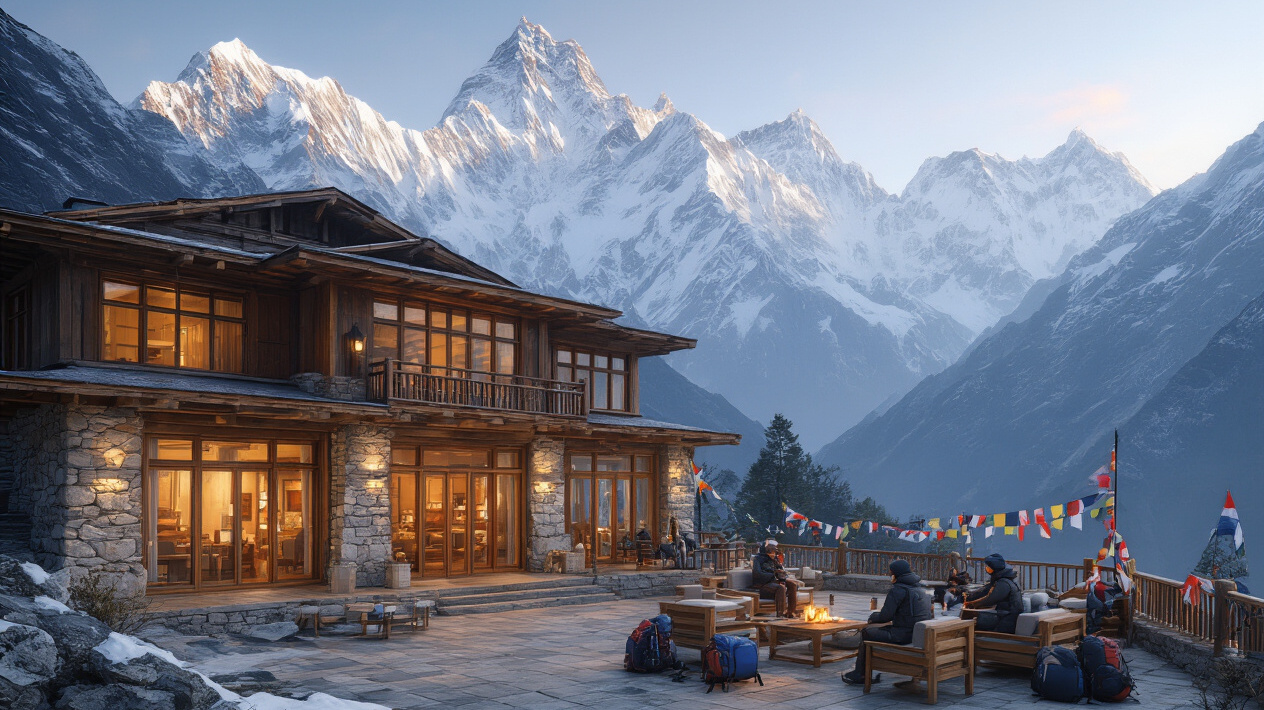
Stay in high-end mountain lodges and resorts
We've carefully selected premium accommodations that redefine what mountain hospitality means in Nepal's high-altitude regions. Our luxury trekking experiences feature exclusive mountain lodges that blend traditional Nepali architecture with modern amenities, offering heated rooms, private bathrooms with hot showers, and panoramic mountain views from your window. These establishments maintain international standards while preserving authentic cultural charm.
We partner with boutique resorts like Yeti Mountain Home properties and Everest Summit Lodge chain, where you'll sleep on comfortable beds with quality linens instead of basic sleeping bags. Each lodge features cozy lounges with fireplaces, WiFi connectivity, and charging stations for your devices. We ensure our luxury accommodations offer oxygen-enriched rooms at higher elevations and 24-hour medical support for your peace of mind.
Enjoy gourmet meals prepared by professional chefs
We elevate your trekking experience with exceptional dining that rivals fine restaurants back home. Our professional chefs create multi-course meals using fresh, locally-sourced ingredients whenever possible, combined with imported specialties to satisfy international palates. You'll enjoy everything from perfectly seasoned dal bhat to continental breakfast spreads and evening wine selections.
We work with culinary teams trained in international cuisine, offering diverse menu options including vegetarian, vegan, and dietary-specific meals. Our chefs prepare elaborate lunch spreads at scenic viewpoints and candlelit dinners in elegant dining rooms. We provide clean, filtered water and premium beverages throughout your journey, ensuring every meal becomes a memorable part of your adventure.
Access helicopter transfers for scenic routes
We integrate helicopter services strategically throughout your luxury trekking experience, maximizing your time in the mountains while minimizing physical strain. Our helicopter transfers allow you to skip challenging or repetitive sections, letting you focus energy on the most spectacular portions of your chosen route. These scenic flights provide breathtaking aerial perspectives of peaks, glaciers, and valleys that ground-level trekking simply cannot match.
We coordinate helicopter pickups for direct transfers to remote starting points, emergency evacuations if needed, and spectacular mountain flights for photography opportunities. Our experienced pilots navigate weather conditions expertly, and we maintain flexible schedules that adapt to your preferences and mountain conditions. These transfers transform logistics into highlights, offering unique vantage points of Everest, Annapurna, and other iconic peaks.
Receive personalized porter and guide services
We assign dedicated teams exclusively to your group, ensuring personalized attention throughout your luxury trekking adventure. Our certified guides possess extensive knowledge of local culture, geology, and mountaineering, serving as both safety experts and cultural ambassadors. We maintain low client-to-guide ratios, typically one guide for every two trekkers, allowing for intimate experiences and customized pacing.
Our porter services handle all logistics, carrying your gear while you walk with just a daypack containing essentials. We provide experienced Sherpa support staff who understand luxury service standards and anticipate your needs before you express them. Our teams undergo regular training in first aid, altitude sickness prevention, and hospitality excellence, ensuring professional service that matches international luxury travel expectations while supporting local communities through fair employment practices.
Cultural Trekking Adventures
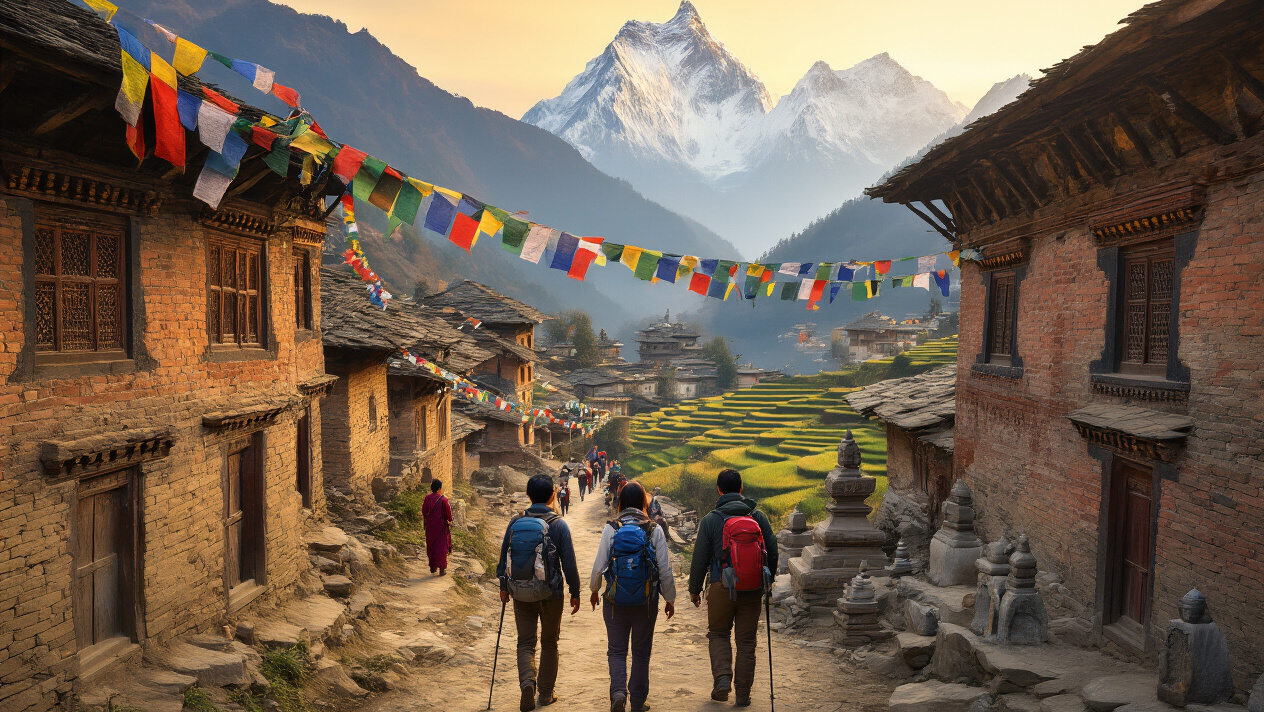
Visit Ancient Monasteries and Sacred Sites
Cultural trekking in Nepal opens our eyes to some of the world's most remarkable spiritual destinations. We find ourselves walking ancient paths that lead to centuries-old monasteries perched dramatically on mountainsides, where prayer flags flutter in the Himalayan wind. These sacred sites offer us glimpses into Buddhist traditions that have remained unchanged for generations.
During our journeys, we encounter monasteries like Tengboche in the Everest region, where monks begin their daily prayers before dawn. We can sit quietly in meditation halls, absorbing the peaceful atmosphere while butter lamps cast dancing shadows on ancient murals. The sound of horns and chanting creates an otherworldly experience that connects us to something much larger than ourselves.
We also discover sacred caves and hermitages where legendary masters once meditated in solitude. These hidden gems require us to venture off main trekking routes, but the reward is extraordinary - we gain access to places where spirituality feels tangible and immediate.
Participate in Traditional Village Festivals
Our timing during cultural treks can align perfectly with local festivals that bring entire communities together in celebration. We witness colorful mask dances during Buddhist festivals, where villagers dress in elaborate costumes and perform stories passed down through oral tradition.
We join locals during harvest festivals, sharing in their joy as they celebrate another successful growing season. These moments allow us to move beyond being mere observers - we become temporary participants in age-old traditions. Village women invite us to help prepare traditional foods, while children teach us local games and songs.
During Losar (Tibetan New Year) or Mani Rimdu festivals, we experience the true heart of mountain culture. We watch as entire communities come together, sharing food, stories, and laughter. These celebrations remind us that despite the harsh mountain environment, these communities maintain vibrant social bonds and rich cultural practices.
Learn from Indigenous Sherpa Communities
Our interactions with Sherpa families provide some of the most meaningful cultural exchanges during our treks. We stay in family-run lodges where three generations live under one roof, each contributing to the household in their own way. Grandmothers share stories of old trade routes while mothers manage bustling kitchens, and children help with daily chores before heading to school.
We learn about traditional Sherpa values - their deep respect for mountains, their concept of community responsibility, and their incredible resilience. Many Sherpa guides become our teachers, explaining not just the physical landscape but the cultural significance of every ridge, valley, and sacred lake we encounter.
Through these relationships, we understand how Sherpa culture balances ancient traditions with modern necessities. We see how they've adapted to tourism while maintaining their core values and beliefs. Their stories of climbing history, family traditions, and spiritual practices enrich our understanding of what it means to live in harmony with such a challenging environment.
Experience Authentic Himalayan Lifestyle
Living among mountain communities during our cultural treks means adapting to rhythms that follow natural cycles rather than clock time. We wake with sunrise and rest when darkness falls, participating in daily routines that haven't changed much over centuries.
We help with morning milking of yaks and dzos, learning how these animals provide everything from transportation to wool for warm clothing. We observe traditional farming techniques on terraced fields carved into impossible slopes, understanding how communities maximize every bit of arable land.
Our meals consist of dal bhat, tsampa, and yak cheese - simple foods that provide the energy needed for high-altitude living. We share these meals around wood-burning stoves while families tell stories and discuss daily concerns. These intimate moments reveal the true character of mountain people - their humor, wisdom, and generous hospitality.
We participate in daily rituals like spinning prayer wheels, hanging prayer flags, and making offerings at local shrines. These practices become part of our daily routine, helping us understand how spirituality weaves through every aspect of Himalayan life. Through these authentic experiences, we gain perspective on what truly matters in life and return home with values that extend far beyond our trekking adventure.
Conquer Thrilling Adventure Trekking Challenges
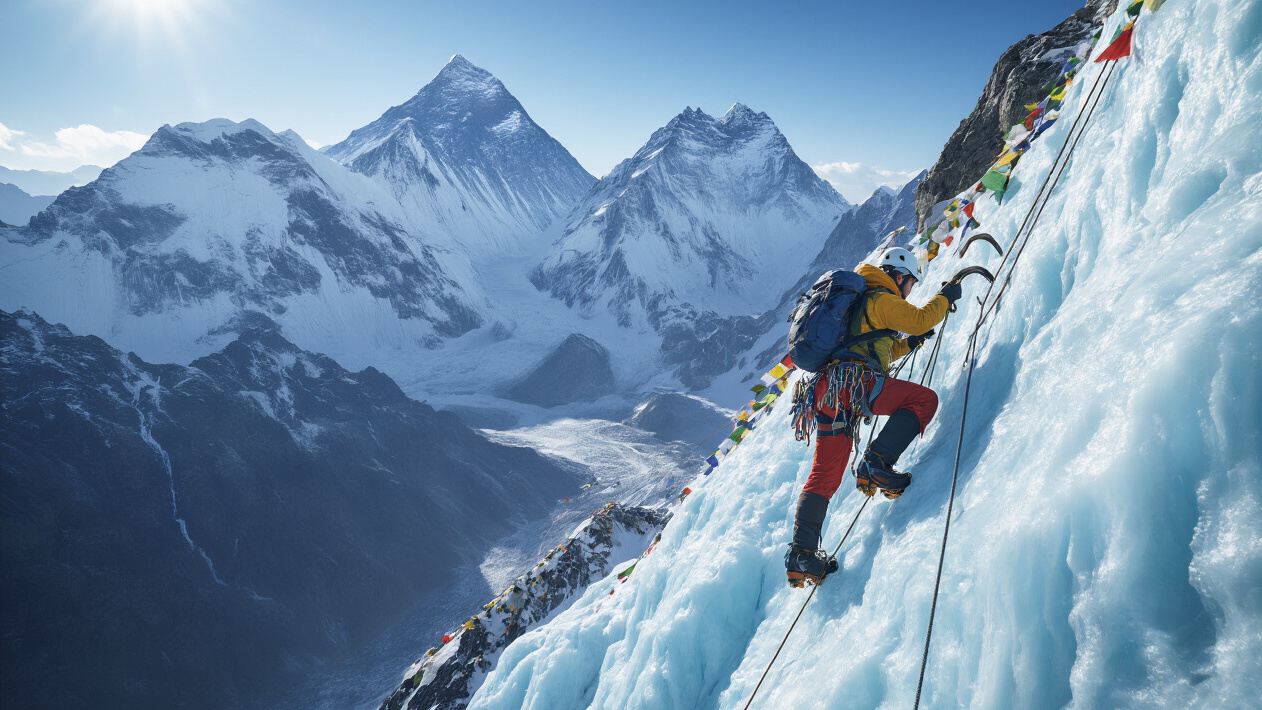
Scale Technical Mountain Passes and Peaks
We challenge ourselves on Nepal's most demanding technical terrain, where every step requires precision and unwavering focus. High-altitude passes like Thorong La at 17,769 feet and Cho La at 17,782 feet test our technical skills and mental resilience. Our crampons bite into ice-crusted rocks as we navigate exposed ridges where one wrong move could spell disaster.
We tackle peaks like Island Peak (20,305 feet) and Mera Peak (21,247 feet), using fixed ropes and ice axes to ascend steep faces. Our climbing harnesses carry essential gear - ascenders, figure-eight devices, and emergency equipment. We practice self-arrest techniques and rope team protocols before attempting these technical challenges.
Navigate Glacier Crossings and Ice Climbing
We traverse unstable icefalls and crevasse-riddled glaciers where the landscape shifts constantly beneath our feet. Our route-finding skills become crucial as we weave between seracs and jump across gaping crevasses using aluminum ladders. We carry glacier rescue equipment and practice crevasse rescue scenarios with our team.
Our ice climbing adventures take us up frozen waterfalls and blue ice walls using specialized gear. We master front-pointing techniques and swing our ice tools with calculated precision. We start with easier grades like WI2 before progressing to steeper WI4 and WI5 climbs that demand advanced technical proficiency.
Push Your Physical and Mental Limits
We prepare our bodies for extreme conditions through rigorous training programs that build cardiovascular endurance and muscular strength. Our daily routine includes weighted pack marches, stair climbing, and altitude simulation exercises months before departure. We focus on leg strength, core stability, and aerobic capacity to handle 12-hour trekking days.
Mental preparation proves equally demanding as we visualize challenging scenarios and develop coping strategies for extreme weather, equipment failures, and team dynamics. We practice mindfulness techniques and stress management to maintain clear decision-making at altitude when oxygen levels drop and exhaustion sets in.
Achieve Lifetime Mountaineering Accomplishments
We celebrate reaching technical summits that few adventurers ever attempt, earning bragging rights that last forever. Our photo albums fill with shots from knife-edge ridges, summit cairns, and victory poses against dramatic Himalayan backdrops. We join an exclusive club of mountaineers who've conquered Nepal's most challenging technical terrain.
We document our achievements through detailed expedition journals, GPS tracks, and video footage that inspire future adventurers. Our accomplishments open doors to even more ambitious expeditions and connect us with like-minded climbers worldwide who share our passion for technical mountaineering challenges.
Practice Responsible Eco-Trekking Principles
Support Local Communities Through Sustainable Tourism
We believe that genuine eco-trekking starts with putting money directly into the pockets of local communities. When we book our treks through local agencies, stay in family-run teahouses, and hire local guides and porters, we're creating economic opportunities that keep traditional mountain communities thriving.
Our approach involves eating at locally-owned restaurants where families prepare dal bhat using ingredients grown in their own fields. We purchase handicrafts, yak cheese, and traditional textiles directly from artisans rather than buying mass-produced souvenirs in Kathmandu. This direct spending helps families send their children to school and maintain their cultural traditions.
We also make sure our porter loads stay within ethical weight limits and that guides receive fair wages. Many of us have witnessed the exploitation that happens when trekkers choose the cheapest options without considering working conditions. By paying fair prices, we ensure our mountain partners can invest in proper gear, insurance, and training.
Community-based tourism initiatives deserve our support too. We seek out homestays where families open their homes to trekkers, providing authentic cultural exchanges while generating income. These experiences often become the most memorable parts of our journeys, creating genuine connections that last long after we return home.
Minimize Environmental Impact on Fragile Ecosystems
Mountain ecosystems recover slowly from damage, so we take extra care to leave no trace during our adventures. We carry reusable water bottles and use purification tablets or UV sterilizers instead of buying countless plastic bottles that end up polluting pristine valleys.
Our waste management strategy involves packing out everything we bring in, including food scraps and toilet paper. We use biodegradable soap when washing, staying at least 200 feet away from water sources to prevent contamination. Many of us bring lightweight camp towels that dry quickly and reduce water usage.
Trail etiquette matters enormously in preserving these delicate environments. We stick to established paths instead of cutting switchbacks, which causes erosion and damages vegetation. During rest stops, we choose rocky or already disturbed areas rather than trampling fragile alpine plants that take decades to grow back.
Wildlife encounters require respectful distance and quiet observation. We never feed animals, which alters their natural behavior and creates dangerous dependencies. Our cameras capture memories without disturbing nesting birds or grazing yaks that are essential to local livelihoods.
Choose Eco-Friendly Accommodation and Transportation
We research accommodations that demonstrate genuine environmental commitment before booking our stays. Solar-powered teahouses, composting toilets, and lodges that source food locally all indicate owners who understand their environmental responsibilities. These places often provide the most authentic experiences while supporting sustainable practices.
Transportation choices significantly impact our carbon footprint. We opt for shared jeeps or buses instead of private vehicles when traveling to trailheads. Many of us extend our stays to justify the long international flights required to reach Nepal, exploring multiple regions during single trips rather than making frequent short visits.
|
Eco-Friendly Choice |
Environmental Benefit |
Cultural Impact |
|
Solar-powered lodges |
Reduced energy consumption |
Demonstrates modern sustainability |
|
Local food sourcing |
Lower transportation emissions |
Supports regional agriculture |
|
Shared transportation |
Decreased vehicle pollution |
Builds community connections |
|
Extended stays |
Reduced flight frequency |
Deeper cultural immersion |
Water heating methods matter too. We choose accommodations that use solar water heaters or efficient wood stoves rather than electric systems powered by diesel generators. Some teahouses now offer hot showers only during peak solar hours, and we gladly adjust our schedules to support these conservation efforts.
Discover Hidden Off-the-Beaten-Path Trekking Routes
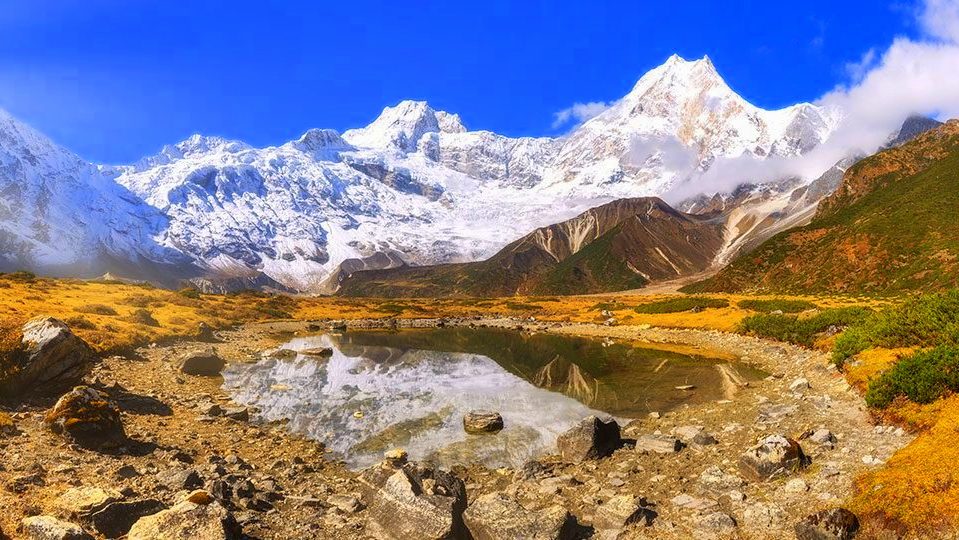
Escape crowded tourist trails for solitude
We understand the magnetic pull of Nepal's famous trekking circuits, but stepping away from the Everest Base Camp and Annapurna Circuit crowds opens doors to extraordinary experiences. Our favorite lesser-known routes include the Manaslu Circuit, where we encounter fewer than a dozen trekkers daily compared to hundreds on popular trails. The Upper Dolpo trek offers us complete isolation for days, with paths so remote that we might be the only foreign visitors local communities see for months.
We've discovered that solitude transforms our trekking experience entirely. Without constant chatter from other groups or the need to compete for teahouse beds, we connect more deeply with the landscape and ourselves. The silence becomes profound – we hear our own breathing, the crunch of snow underfoot, and the distant call of Himalayan wildlife. These quiet moments create space for reflection and genuine connection with Nepal's raw beauty.
Explore undiscovered valleys and remote villages
Hidden valleys throughout Nepal hold secrets that mainstream tourism hasn't touched. We've ventured into the Tsum Valley, where ancient Tibetan culture thrives unchanged for centuries. Here, we encounter monasteries that rarely see outsiders and participate in daily village life alongside locals who welcome us with genuine curiosity rather than commercial interest.
The Nar Phu Valley presents us with medieval fortresses perched on impossible cliffs and communities that still practice traditional farming methods. We've shared meals with families who speak languages that linguists are only beginning to document. These interactions feel authentic because we're not part of a tourist parade – we're genuine visitors experiencing real cultural exchange.
Remote villages often surprise us with their resourcefulness and warmth. We've stayed in homes where electricity arrives sporadically, yet families share their best food and stories late into the night. Children who've never seen smartphones gather around our cameras with wonder, while elders share wisdom about mountain weather patterns and wildlife behavior that guidebooks never capture.
Encounter rare wildlife in pristine habitats
Off-the-beaten-path routes take us through ecosystems that remain largely undisturbed by human traffic. We've spotted snow leopards in the remote corners of Dolpo, where patient waiting and local guide knowledge reward us with glimpses of these elusive cats. The lack of regular human presence means wildlife behaves naturally, offering us authentic observation opportunities.
Our treks through protected areas like Makalu-Barun National Park reveal biodiversity that thrives in isolation. We've encountered red pandas in their natural bamboo forests, watched Himalayan tahrs navigate impossible cliff faces, and observed musk deer feeding in high alpine meadows. These moments happen because we're treading lightly in areas where animals haven't learned to fear or avoid humans.
Bird watching becomes exceptional in remote regions. We've documented species that ornithologists consider rare, including various pheasants, eagles, and high-altitude specialists. The absence of crowds means we can sit quietly for hours, allowing shy species to emerge and behave naturally around us.
Create unique photographic opportunities
Remote trekking routes offer us photographic subjects that few cameras have captured. We've photographed monasteries where morning prayers unfold without tourists, creating intimate documentary opportunities. The golden hour light hitting untouched peaks provides landscape shots that stand apart from the thousands of images taken daily at popular viewpoints.
Our cameras capture authentic cultural moments – children playing traditional games, craftspeople working with ancient techniques, and festivals celebrated purely for local communities rather than tourist appeal. These images carry emotional weight because they represent genuine experiences rather than staged tourist attractions.
The technical photography opportunities also excel in remote areas. We've captured star trails over peaks that rarely appear in other photographers' portfolios. Wildlife photography becomes more rewarding when animals aren't habituated to human presence. Weather phenomena like cloud inversions, mountain storms, and sunrise alpenglow create dramatic conditions that we can photograph without competing for shooting positions with other photographers.
Master Essential Tips for Successful Nepal Trekking
Prepare Physically Through Targeted Training Programs
We can't stress enough how crucial physical preparation becomes for Nepal's demanding terrain. Our bodies need at least 8-12 weeks of consistent training before tackling any serious trek. We recommend starting with basic cardio exercises like walking, running, or cycling for 30-45 minutes daily. As we build our base fitness, we should gradually incorporate hiking with a loaded backpack on weekends.
Strength training plays an equally important role in our preparation. We focus on exercises that target our legs, core, and shoulders - squats, lunges, planks, and step-ups work wonders. Stair climbing becomes our best friend, especially when carrying weight. We also practice walking on uneven surfaces to improve our balance and ankle stability.
Pack Smartly With Proper Gear and Clothing
Our packing strategy can make or break our trekking experience. We follow the layering system religiously - base layers that wick moisture, insulating layers for warmth, and outer shells for protection against wind and rain. Quality trekking boots that we've already broken in at home prevent painful blisters on the trail.
We pack only essentials and weigh every item carefully. Our backpack shouldn't exceed 10-15% of our body weight for day treks. We bring multiple pairs of moisture-wicking socks, a reliable headlamp with extra batteries, and a first-aid kit customized for trekking needs. Water purification tablets or a portable filter ensure we stay hydrated safely.
Acclimatize Gradually to Prevent Altitude Sickness
We never rush our ascent above 3,000 meters. Our golden rule stays simple: climb high during the day, sleep low at night. We plan rest days every 3-4 days of climbing to let our bodies adjust properly. We drink plenty of water and avoid alcohol and sleeping pills at altitude.
We watch for symptoms like headaches, nausea, dizziness, or unusual fatigue. If symptoms worsen or don't improve with rest, we descend immediately. We carry acetazolamide (Diamox) after consulting our doctor, but we never rely on medication alone to prevent altitude sickness.
Respect Local Customs and Environmental Guidelines
We embrace the "Leave No Trace" principle throughout our journey. We pack out all our trash and use designated toilet facilities whenever possible. We stick to established trails to prevent erosion and avoid picking plants or disturbing wildlife.
We dress modestly, especially when visiting monasteries or villages. We ask permission before photographing people and respect their wishes if they decline. We support local economies by staying in teahouses, hiring local guides, and buying supplies from village shops. We learn basic Nepali phrases to show respect and connect better with local communities.
From the rustic charm of Teahouse Trekking to the thrilling adventure of Camping Trekking and the hassle-free experience of Service Trekking, Nepal offers diverse trekking experiences tailored to every traveler's desires. Couple this with modern amenities like WiFi and charging facilities, even in remote areas, and you have the perfect blend of tradition and convenience. As you venture into the heart of the Himalayas with Luxury Holiday Nepal, rest assured that each step promises not just scenic beauty but also a touch of home comforts and professional guidance. Embark on a Nepalese trekking journey that truly encapsulates the best of both worlds.
If you need any further information, please contact us by email: [email protected], Phone: +977- 985 100 5129 (WhatsApp)




